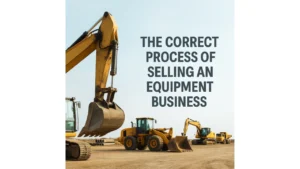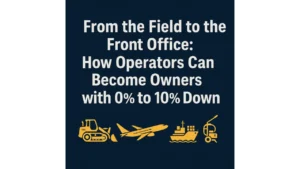Skid steers are the workhorses of many job sites, prized for their versatility and compact size. From landscaping and construction to agriculture, these machines can do it all. However, like any piece of heavy equipment, skid steers come with risks. They may seem small compared to larger equipment, but they pack a lot of power, and that power requires respect. Proper safety habits are crucial to ensure operations run smoothly without accidents or injuries. That’s why [Your Brand Name] is here to help you explore some good safety habits and practices to follow when working with skid steers.
Start with a Pre-Operation Inspection
A productive and safe day on the skid steer starts with a thorough pre-operation inspection. Before stepping into the cab, operators should take the time to walk around the machine and check for any issues. Inspect the tires or tracks to ensure they’re in good shape and free of damage. Look for leaks in the hydraulic system, and confirm that all fluid levels—including engine oil, coolant, and hydraulic fluid—are where they should be. This is also the time to make sure the safety mechanisms are fully operational, such as the seat belt, door latches, and interlocking controls. Skipping this step might seem like a way to save time, but identifying issues before you start working can prevent costly breakdowns and, more importantly, serious accidents.
Don’t Neglect Routine Maintenance
Good maintenance practices also contribute to skid steer safety. Routine servicing, such as checking hydraulic lines, filters, and belts, ensures the machine remains in top condition. Neglecting maintenance can lead to unexpected failures, increasing the risk of accidents. Keeping the cab clean and free of clutter is another overlooked safety tip. Loose items can interfere with controls and cause distractions, so it’s important to keep things tidy inside the cab.
Get Proper Training and Know Your Equipment
Training and familiarity with the equipment are fundamental to job safety. Anyone operating a skid steer should receive proper training and know how to use the specific model they are working with. While all skid steers share some common features, different models may have unique controls or safety systems. Operators should take the time to read the manual and understand how to operate the machine correctly. If you’re unsure how a feature works, ask questions or seek additional training. A knowledgeable operator is a safer operator.
Wear Proper PPE
Wearing the right personal protective equipment (PPE) is crucial for any job, especially when operating or working around skid steers. Operators should always wear steel-toe boots, gloves, and eye protection to protect against flying debris and other hazards. Hard hats and high-visibility vests are critical when working on busy construction sites, especially when multiple machines are operating nearby. For the operator, wearing the seat belt inside the cab is non-negotiable. It keeps you securely in place if the machine tips over—a real risk on uneven or unstable ground.
Know Your Surroundings
Understanding your surroundings is key to safe skid steer operation. Machine operators should always be aware of people, equipment, and obstacles in their work area. Before starting the machine, it’s a good idea to walk through the job site to identify any hazards, like trenches, low-hanging branches, or uneven terrain. Clear communication between the operator and other workers on the ground is also crucial. Make it a habit to use hand signals or two-way radios to help avoid dangerous situations when visibility is limited. Workers on foot should maintain a safe distance from the skid steer, as blind spots can make it hard for operators to see what’s behind them.
Operate with Care and Precision
Operating the skid steer with care and precision is essential, even for experienced operators. It’s easy to fall into the trap of rushing through tasks, but reckless operation can lead to accidents. Always operate at safe speeds, especially when turning or working on slopes. When carrying loads—no matter how heavy—keep the bucket low to the ground to maintain the machine’s center of gravity. This reduces the chance of tipping, especially when traveling on uneven ground. And lastly, when parking the machine, lower the attachments to the ground, engage the parking brake, and turn off the engine before exiting the cab. These small habits make a big difference in maintaining a safe environment for everyone on site.
Safety First for Smooth Operations
Taking a few extra minutes for inspections, using proper communication, and operating the machine with care can prevent accidents and keep your crew safe. Whether you’re working on a farm, in construction, or tackling a landscaping project, safety for yourself and others should always be your top priority. After all, getting the job done efficiently means doing it safely.






